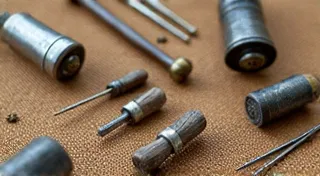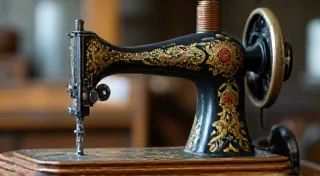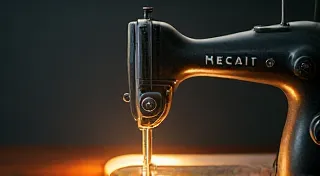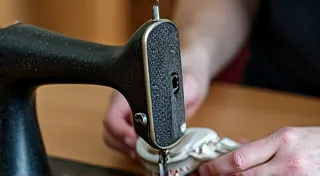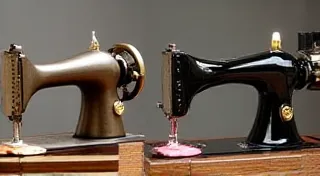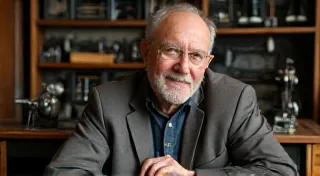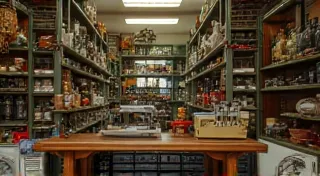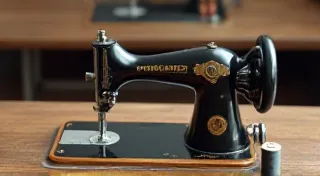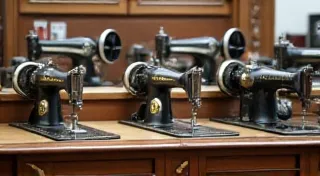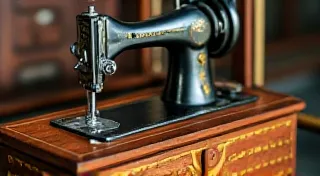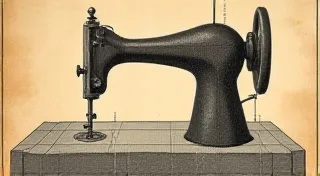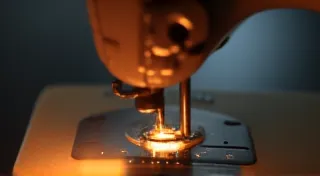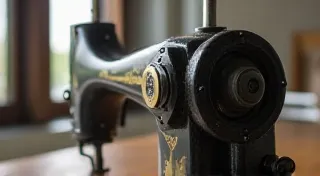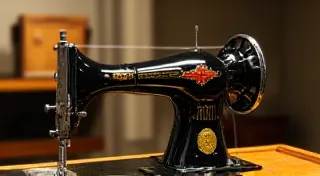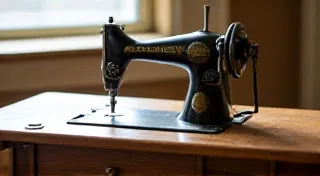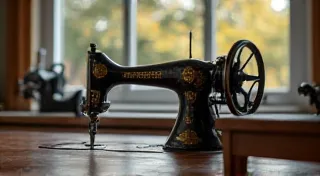Collecting Vintage Sewing Machines: A Journey Through History & Craftsmanship
Welcome to a captivating world – the world of vintage sewing machines! More than just relics of the past, these beautifully crafted machines represent a fascinating intersection of ingenuity, industrial revolution, and the enduring human desire to create. Whether you’re a seasoned collector or just beginning your exploration, this website is your comprehensive guide to antique sewing machines, their history, identification, restoration, and the joy of sewing machine collecting.
For generations, sewing has been a vital craft, and the evolution of the sewing machine itself reflects societal shifts and technological advancements. From the earliest, cumbersome models to the elegant, streamlined machines of the early 50s, each represents a significant step in the history of textile production. We’re here to help you appreciate the nuances of this history and build a collection you can be proud of. And, of course, the thrill of owning truly collectible machines!
A Glimpse into the History of Sewing Machines
The story of the sewing machine is a complex and fascinating one. While many individuals contributed to its development, Elias Howe and Isaac Singer are often considered pivotal figures. Howe patented his lockstitch design, but faced challenges enforcing his patent. Singer, on the other hand, aggressively marketed his machines, making them accessible to a wider audience and forever changing the landscape of garment production. Understanding this history is key to truly appreciating the value of a piece of sewing history in your collection.
The need for faster and more efficient garment creation spurred innovation. Early machines were often cumbersome and difficult to use, but the relentless pursuit of improvement led to remarkable advancements. The emergence of the hand crank sewing machine, with its portability and relative ease of use, proved to be a true revolution, allowing for sewing on the go. Our dedicated page, The Rise of the Hand Crank Sewing Machine: A Portable Revolution, delves deeper into this era of accessible creativity.
Building Your Collection: Identification & Appreciation
So, you’re interested in starting a collection? Excellent! The first step is learning to identify different models and manufacturers. While Singer is undoubtedly the most recognizable name, the world of other sewing machine manufacturers is rich with intriguing and often rarer machines. From Wertheim to Grover & Baker, each has its own unique design aesthetic and historical significance. Identifying the qualities that elevate a machine to the status of collectible machines is an art in itself.
Identifying your machine accurately is crucial for dating it correctly. Understanding serial numbers is the key to unlocking this information. A machine’s serial number can provide insights into its production date, model, and even its original location. We have a comprehensive guide, Understanding Serial Numbers: Dating Your Vintage Sewing Machine, to help you decipher these codes.
Beyond the mechanics, there's an undeniable aesthetic appeal to antique sewing machines. These machines are often works of art, featuring intricate details, ornate decorations, and beautiful finishes. They’re more than just tools; they’re beautiful objects worthy of admiration. Our page, The Aesthetic Appeal: Why Antique Sewing Machines Are Beautiful Objects, explores this fascinating aspect of collecting. Some models, due to their rarity or unique features, become highly sought-after collectible machines.
The Mechanics of the Past: Repairs & Restoration
Many vintage sewing machines have seen a long life and may require some maintenance or repair. Learning basic troubleshooting and repair skills can significantly enhance your collecting experience and preserve these machines for future generations. Common problems can range from lubrication issues to broken parts. Our guide, Common Problems & Repairs for Antique Sewing Machines, provides practical advice for keeping your machines in top working order.
Sometimes, a machine arrives in less-than-perfect condition, covered in rust and grime. Restoring a rusty antique sewing machine can be a rewarding but challenging project. It requires patience, careful attention to detail, and the right tools and techniques. Our step-by-step guide, Restoring a Rusty Antique Sewing Machine: A Step-by-Step Guide, provides a detailed walkthrough to help you breathe new life into these historic machines. Proper restoration can dramatically increase the value of a collectible machine.
Beyond the Basics: Patents, Global Reach & Notable Machines
The design and functionality of early sewing machines were often shaped by the influence of patents. Inventors fiercely protected their innovations, and the legal battles that ensued often spurred further advancements. Our page, The Influence of Patents on Early Sewing Machine Design, explores the critical role of intellectual property in the evolution of sewing machine technology.
The global reach of antique sewing machines reveals fascinating variations in design and functionality reflecting regional preferences and manufacturing capabilities. Different countries developed their own unique approaches to sewing machine construction and marketing. Our guide, The Global Reach of Antique Sewing Machines: Variations by Region, celebrates the diversity of this collection. Certain regional variations can make a machine highly desirable as a collectible machine.
For collectors, some machines stand out as particularly desirable. The Singer Black Patent Sewing Machine, with its rarity and historical significance, is a true treasure. Singer 201: A Collector's Dream – Identification & Restoration and Collecting Singer Featherweight Machines: A Collector's Guide provide in-depth information for enthusiasts. These are prime examples of collectible machines.
The Impact of Technology and Innovation
The world of sewing machine design was transformed by the impact of automation, which drastically altered production processes and led to a new generation of machines. While some collectors focus exclusively on pre-automation models, understanding this transition is important for appreciating the evolution of the craft. The Impact of Automation on Sewing Machine Design explores this pivotal shift.
The evolution of the treadle sewing machine stands as a remarkable journey of engineering and adaptation. Transforming the human power of a foot pedal into a powerful sewing machine required ingenuity and precision, and these machines remain highly sought-after by collectors. Learn more about this fascinating technology on our page: The Evolution of the Treadle Sewing Machine: From Necessity to Collectible.
Finding Your Treasures: Auctions, Shops & Online Resources
So, how do you acquire these treasures? Where to find vintage sewing machines can vary widely. Auctions are a popular option for seasoned collectors, while antique shops and online marketplaces offer a more accessible entry point for beginners. Where to Find Vintage Sewing Machines: Auctions, Shops & Online provides tips and resources to help you discover your next prized possession.
Accessories and Beyond
A true collector appreciates the full picture. Accessories to complement your vintage sewing machine collection, such as original cases, manuals, and attachments, can significantly enhance the value and appeal of your machines. And don't forget about the smaller items, like identifying early sewing machine needles and accessories. Our guide, Accessories to Complement Your Vintage Sewing Machine Collection, covers these important details. Completing a machine with original accessories is crucial for its status as a valuable collectible machine.
The world of vintage sewing machine collecting is filled with fascinating stories and passionate individuals. Discover the tales of famous collectors of antique sewing machines and their stories. This guide explores the journeys of some of the most dedicated enthusiasts in the field. Famous Collectors of Antique Sewing Machines and Their Stories delves into their passions and collections.
We hope you enjoy exploring our website and discovering the fascinating world of vintage sewing machines. Happy collecting!
